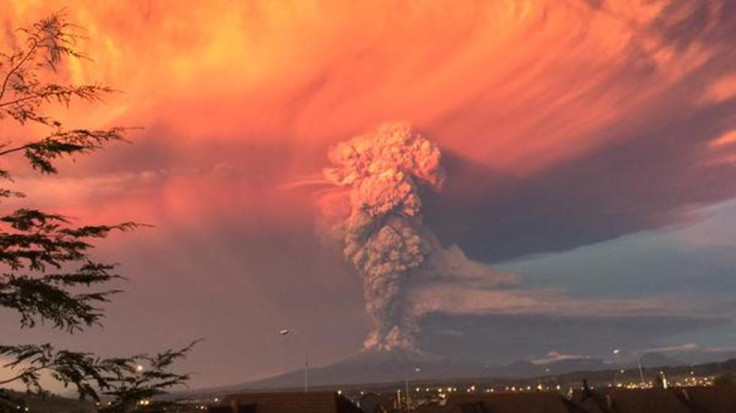Chile's Calbuco volcano erupts, hundreds of people flee

Southern Chile's Calbuco volcano has erupted for the first time in more than four decades in a shuddering spew of ash and smoke high into the sky.
Officials declared a red alert as the massive eruption turned the sky orange then blood red some 1,000 kilometres (620 miles) south of the capital of Santiago near the sparsely populated tourist town of Puerto Varas as well as Puerto Montt and Ensenada. More than 1,500 people were being evacuated in a 20km zone around Calbuco.
The eruption "sounded like a big tractor trailer passing by the road, rattling and shaking, guttural rumbling. We left everything there, grabbed my kid, my dog, got in the car with my wife," Ensenada resident Tom Moffat told a reporter from the Australian Broadcasting Corporation. "All the neighbours were outside, a lot of young people crying. Armageddon-type reaction."
The military was in the area helping residents to evacuate and providing water following fears about ash contamination. Flights over the area were being rerouted.
The streets were filled with nervous residents en route to buy food, emergency supplies and gas, according to witnesses.
"In this situation, with the eruption column so high, the main risk is that it collapses, falls due to gravity because of its own weight and causes a pyroclastic flow," said Gabriel Orozco, a vulcanologist with Chile's geological and mining service.
A pyroclastic flow is a superheated current of gas and rock that can destroy nearly everything in its path and can travel at speeds of 300 kph (185 mph).
The 2,000 metre (6,500 foot high) volcano last erupted in 1972 and is considered one of the top three most potentially dangerous among Chile's 90 active volcanoes. Last month the Villarrica volcano erupted in a flaming burst of ash and lava.
Chile, on the Pacific Rim of Fire, has the second largest chain of volcanoes in the world after Indonesia, including some 500 that are potentially active.
© Copyright IBTimes 2025. All rights reserved.






















